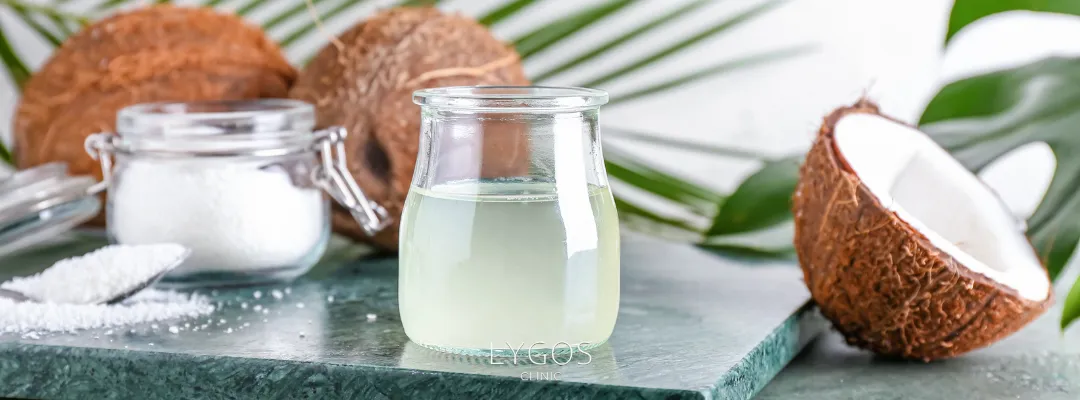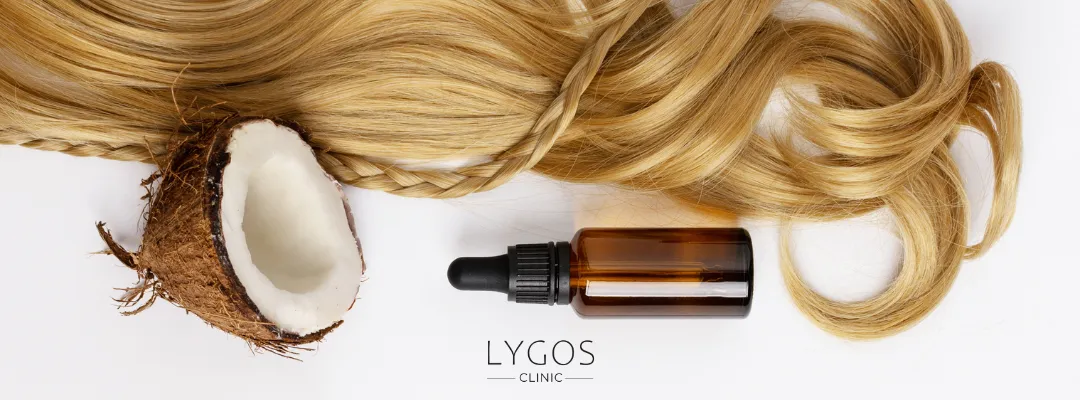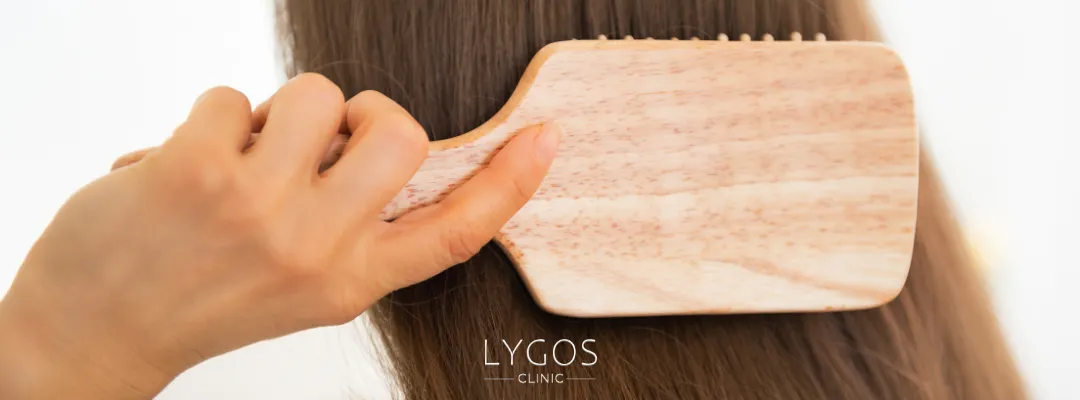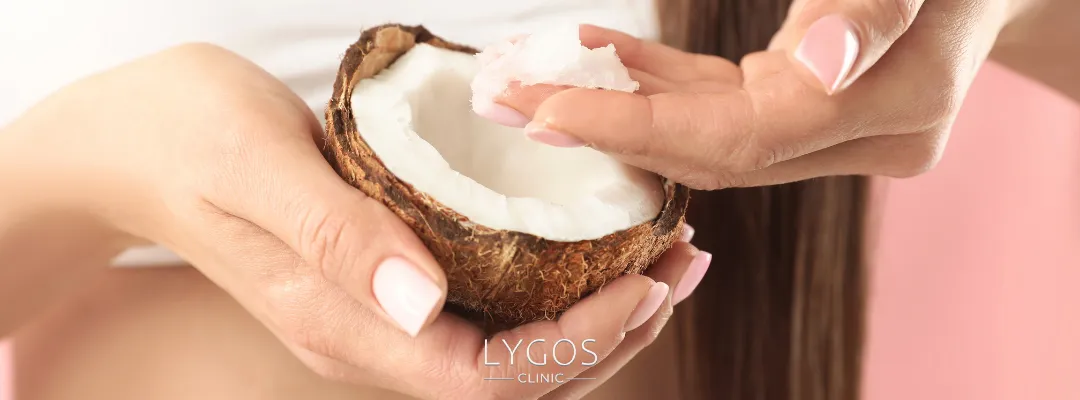How to Apply Coconut Oil to Hair | Hair Care | LYGOS 2025

How to Apply Coconut Oil to Hair: A Complete Guide
Coconut oil is a versatile and natural solution for many hair care needs. From deeply nourishing your hair to addressing various hair problems, how to apply coconut oil to hair effectively can transform your routine. In this guide, we’ll dive into everything you need to know about how to apply coconut oil to hair, ensuring it becomes your secret weapon for luscious locks.
What is Coconut Oil?

Coconut oil is an edible oil extracted from the meat of mature coconuts. Known for its high content of saturated fats, primarily lauric acid, it offers numerous benefits for skin, hair, and overall health. The oil is available in two main forms: virgin coconut oil, which is cold-pressed and unrefined, and refined coconut oil, which is processed to remove impurities and make it more shelf-stable.
Due to its molecular structure, coconut oil can penetrate hair strands deeply, delivering nutrients directly to the hair shaft. Understanding what coconut oil is the first step in learning how to apply coconut oil to hair effectively. The properties of coconut oil, such as its lightweight texture and ability to lock in moisture, make it an essential part of any hair care regimen. Knowing how to apply coconut oil to hair properly ensures you reap its full benefits.
What are the Benefits of Coconut Oil for Hair?

1.Deep Moisturization
Coconut oil locks in moisture, helping to prevent dryness and minimize frizz. Learning how to apply coconut oil to hair in the right way can maximize this benefit.
2.Strengthens Hair
Lauric acid, a key component of coconut oil, binds with the protein in hair, fortifying the strands and minimizing breakage. Knowing how to apply coconut oil to hair can help prevent these common issues.
3.Reduces Protein Loss
Hair often loses protein during washing and styling. Coconut oil protects against this loss, ensuring hair remains resilient. This is one of the key reasons understanding how to apply coconut oil to hair is important.
4.Promotes Hair Growth
Regular use can stimulate hair follicles, leading to faster and healthier growth. If you’re looking for how to apply coconut oil to hair for growth, a regular routine can yield significant results.
4.Scalp Health
Its antimicrobial properties help combat dandruff, itchiness, and minor scalp infections. Exploring how to apply coconut oil to hair ensures that your scalp stays healthy and your hair thrives.
If you’re considering how to apply coconut oil to hair, these benefits make it clear why it’s such a popular choice.
Which Hair Problems Is Coconut Oil Good for?

When learning how to apply coconut oil to hair, it’s helpful to understand the hair problems it addresses. Coconut oil can tackle dryness and frizz, as its emollient properties smoothen and soften hair. For those battling dandruff, coconut oil’s antifungal properties help reduce yeast buildup on the scalp.
While it does not repair split ends, it provides a protective coating that reduces further damage. If you’re facing hair loss, coconut oil can be a game-changer. Applying coconut oil to the scalp stimulates blood circulation and nourishes hair follicles, which may help reduce hair fall. Heat-styled or chemically treated hair can benefit from coconut oil’s restorative properties, which help regain natural texture and strength. Understanding how to apply coconut oil to hair for specific issues ensures targeted results.
How Should Hair Preparation Be Before Using Coconut Oil?

Proper preparation ensures how to apply coconut oil to hair is as effective as possible.
Start by detangling your hair with a brush or comb to remove knots and tangles, which allows the oil to distribute evenly. Choosing the right coconut oil is also crucial—virgin coconut oil is ideal for maximum benefits.
Slightly warming the oil (but not too hot) enhances absorption, making how to apply coconut oil to hair even more effective. If your hair has a lot of product buildup, shampoo it first to ensure the oil penetrates well. Dividing your hair into manageable sections ensures every strand is coated evenly, a vital step in mastering how to apply coconut oil to hair.
How to Apply Coconut Oil to Hair?

Applying coconut oil to the scalp stimulates blood circulation and nourishes hair follicles, which may help reduce hair fall.
- Warm a few tablespoons of coconut oil and apply it evenly from roots to tips.
- Gently massage the scalp and cover the hair with a shower cap.
- Leave it on for at least 30 minutes or overnight, then rinse thoroughly with shampoo.
You can also use it as a pre-wash treatment by applying it to dry hair about 15-20 minutes before shampooing. Focus on the mid-lengths and ends to prevent buildup at the roots. Pair this with a lightweight conditioner to maintain hydration without weighing down your hair.
For improving scalp health, gently massage warm coconut oil onto your scalp in circular motions, letting it sit for about 30 minutes before washing. Mastering how to apply coconut oil to hair ensures maximum benefits for every type of application.
Hair Care After Coconut Oil Use

After mastering how to apply coconut oil to hair, proper aftercare is crucial for achieving long-lasting results.
- Washing your hair thoroughly with a clarifying or sulfate-free shampoo removes any excess oil, preventing buildup.
- Ensure hair is shampooed before applying coconut oil if there’s significant product buildup to improve absorption.
- Avoid using heat styling tools directly after applying coconut oil; let your hair air dry naturally for best results.
- Regularly incorporating coconut oil into your routine—around 1-2 times a week—ensures consistent benefits.
The steps for hair care after coconut oil use are as vital as the application itself, preserving the results of your effort. By focusing on how to apply coconut oil to hair and its aftercare, you maintain the moisture and nutrients provided by the treatment.
By understanding how to apply coconut oil to hair and following these guidelines, you can transform your hair care routine into a nourishing and revitalizing experience.


